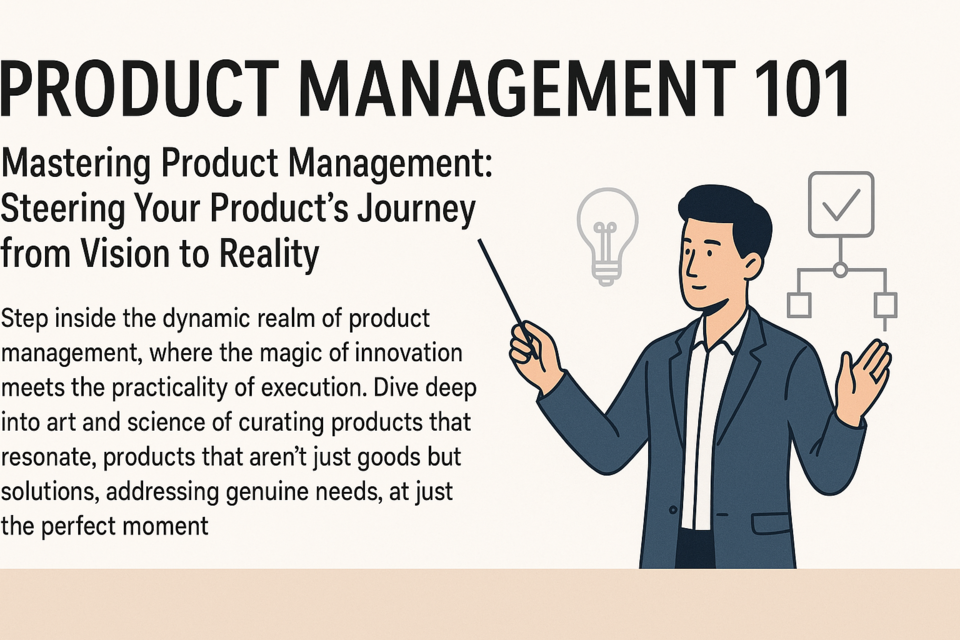Business consultants have a responsibility to ensure that their recommendations are implemented. They also facilitate the implementation of the organization's action items related to your consulting services. It is your responsibility to manage an approach when recommendations are rejected, deferred, or inadequately implemented. How you implement your recommendations is based on the information that you acquired during the consulting process. As you consult with the organization, you will have many opportunities for brainstorming sessions with the employees and management. A number of these activities that will help you develop your implementation plan include: interviewing employees, fact-finding, application of analytical methods, and validating recommendations.
As the consultant, you want to engage the organization to accept and implement all of your recommendations. In reality, they will only accept the recommendations they value. Part of your job is to have them recognize the value in as many recommendations as possible.
There are a number of steps you can take to ensure your recommendations are accepted and implemented. These include:
-
Clearly spelling out your expectations
-
Explaining the benefits that can be expected from the implementation
-
Identifying alternatives
-
Requiring a time frame you can expect implementation to begin
-
Requiring a time frame for the completion of implementation
-
Determining key points when recommendations should be fully implemented
-
Determining when the company will realize the expected benefits
-
Monitoring the recommendations at a pre-determined time
You want to verify that the intent of the recommendations were met, and that you agree on the action taken. You will manage a tracking system as part of your consulting methodology for tracking your recommendations and implementation. In this instance, you want to verify that there are reasons for not implementing the recommendation, that the recommendation might have possibly been met through an alternative approach, or that the recommendation is still valid. Each consultant sets up the different auditing process to ensure their implementations occur.
The implementation of your recommendations is very critical for both the organization that has hired you as a consultant, and your reputation, overall, as a consultant. If clients are used as a reference and they do not feel that progress was made, or the desired results were achieved, they may not provide you the references you hoped. Poor implementation can have significant ramifications, which may even include unintended consequences, where conditions worsened even further than existed prior to the consultation.
There are many effective practices you can use for implementation. You want to start by ensuring that the company you are working for is ready for implementation. This is called business readiness. It may involve cultural changes and your involvement to help implement the changes. In this capacity, you will need a liaison employee who will be the go-to person within the company to help with the implementation. As you implement, there will be a number of factors you will also look at; these include:
-
Development of a change management strategy to navigate issues related to change implementation. Typically this is documented and developed through a change management plan.
-
Requirements for new equipment or software to assist in new business processes
-
Training for employees in the business implementation and ongoing, as needed, throughout the implementation
-
Communication of all implementation plans with employees
-
Scheduling of the implementation, with advance planning notifications
-
Ensuring adequate resources are in place to support the implementation which include a budget covering implementation costs
Implementation plan design
There are many ways to approach an implementation plan. An implementation plan is typically housed in a Word document, and subsequent actions are contained in an Excel document. You will develop your own implementation plan, using your own methodology, but a common approach is to use the Word and Excel documents. The word document will contain the narrative information on approaches that need to be taken. The Excel document is used to track issues and actions and monitor resolution.
Adjust your implementation plan to suit your needs. These are the common elements included in an implementation plan:
-
Purpose - This explains why the implementation is necessary in the summary overview of the consulting indications.
-
Mission and values - This section allows for a reiteration of the overall mission, vision, and values of the organization, so they are intertwined with the implementation, and aligned with the overall strategic mission.
-
Management commitment - This is a brief statement on how management values the recommendations needed for improvement and pledges to support the implementation and resource requirements needed to make the changes.
-
Implementation goals -These explain the expected result upon implementation.
-
The strategy for implementation - This explains the methodologies that will be used, and how the implementation will occur -- such as communication processes, meeting requirements, training requirements, and employee interaction that will be necessary to implement the changes.
-
The processes - This portion explains the details of subsequent activities required by management, supervisors, and employees to effect the change.
-
Measurements and reporting systems - This shows the mechanisms that will be used to communicate progress of the implementation, and what measurements will be used to track progress and quality.
-
Education and training requirements - This section is important, because it is necessary that employees receive the necessary education and training for new changes in their work activities.
-
Customer satisfaction feedback - This is used to determine how well the implementation process went, the overall successes and failures of implementation, information for continuous process improvement, and for use in your overall consulting return on investment
Here is a brief sample from an improvement implementation plan for a retail store. The information was tracked and the spreadsheet included the improvement activities, the description of the improvement to be performed, and contains information on the accountable individual for tracking progress, and dates. The milestones are achieved. These types of activities are easy to show in graphical form to your clients employees. In this manner they become a part of the process because they are responsible for measuring and tracking their implementation.
|
Implementation Plan |
|
|
Improvement Activity |
Improvement Description |
|
Revenue per employee |
Implement our plan to improve sales per employee, including training, formal education, and practice exercises. |
|
Process wastes |
Implement additional 5S teams to deploy throughout clothes and homes similar to warehouse improvements. Develop a tracking system for 5S and ROI in functional areas. |
|
Maintenance costs |
Develop a multidisciplinary team to evaluate financial costs, engineering perspective, and store satisfaction with maintenance and areas for improvement. |
|
Advertising costs |
Develop an internal marketing and advertising team to develop a plan for refined advertising and increasing the impact per dollar. |
|
Unfriendly employees |
Implement a training program with mentors, examples, and incentives for providing the "best" customer service. |
|
Unhelpful employees |
Implement "a day in your shoes" program, so all levels view work from the customer's level and develop improvements. |
|
Return policy |
Develop new policy with management and floor employees with customer input -- deploy immediately. |
As you implement your recommendations the implementation plan is useful; you may also benefit from a SWOT analysis and PEST analysis to ensure successful implementation of your recommendations from a cultural standpoint.
The SWOT analysis reviews the strengths, weaknesses, opportunities and threats to an organization, typically in a quadrant-type grid:
A PEST analysis is similar to the SWOT analysis and is a strategic method for analyzing the macro-environment in which an organization operates. The acronym PEST stands for:
-
Political stability, economic and taxation policies, trade agreements, and other political forces
-
Economic interest rates, employment levels, economic trends, GDP, and other economic micro and macro factors
-
Social includes demographic, religious, and cultural factors
-
Technological includes innovation, manufacturing cost, quality of products, and the effect of technology on marketing and distribution
Using a combination of the two of these methodology tools, you can refine the methods you need to ensure your recommendations are implemented. There may be a number of factors that affect why they are not -- such as cultural factors, or issues with technology.
In addition to your implementation plan, a control plan is a complementary methodology for ensuring the ongoing success of the improved process -- including the transfer of responsibility from the consultant to the client organization.
The control plan is a document that lists what is monitored in a product, service, or process as far as characteristics of quality. The control plan plays an important part in sustaining product quality, long after a manufacturing process is developed and launched. There is no specific style of project control plan for a specified particular improvement. Use a combination of spreadsheets and text documents to keep track of the measures being improved. In general, you determine all of the headers and labels for your control plan, which are critical to quality, proven to be important to the customer, and include a hierarchical reference number.
Issues to watch out for
Following are activities that you want to be aware of, and mitigate, as a consultant during the implementation process:
-
Communication issues cause ineffective communication between the client and stakeholders for employees.
-
Unclear objectives cause problems as implementation unfolds. Objectives should be clearly outlined in the implementation plan, and any ambiguity resolved by leadership and/or a combination of employee brainstorming.
-
Failure to manage quality on the client side of implementation. Attention to detail and quality metrics sets the motion for potential failure
-
Accountability and responsibility is an area that must be actively monitored during the implementation process, so that employees are clear on their individual duties, and managers and supervisors are clear on their oversight roles of the implementation.
-
Inadequate resource alignment can occur because the clients may be new or unfamiliar to the resources necessary to implement changes.
-
Poor scheduling is a common issue with consulting implementation, because clients poorly manage the coordination of resources, leading to a sub-optimal implementation
A consultant often serves as a coach, mentor, facilitator, innovator, and motivator. Be sure that the company celebrates milestones in the implementation with employees, and they are aware and in tune with the progress that has been made through employee communications. Communication of the activity is key to keeping the improvements in the forefront with employees and management. A great practice to implement as a communication tool is a daily huddle board. Huddle boards are placed in centralized work areas of employees. Each morning the employees meet as a team and with a leader to develop the daily plan of action for normal operations, but also to implement their strategic requirement for recommendation implementation. Many of the processes they impact are measured over time. So it is critical to track the progress on a frequent basis, allowing the data to speak for itself. This is the perfect opportunity to show the data in the form of graphs, charts, or other methodology tools that provide employees a quick and easy way of seeing the change. It also gives them milestones to celebrate the improvement.
Besides communication, the consultant is responsible for determining ways to overcome obstacles. A common approach in this area is to use employee brainstorming. Employees may develop prioritization matrices, which are tools to compare the alternative actions or choices, when a clear choice is not easily understood or apparent, and is achieved using a combination of brainstorming techniques, action planning, and issue analysis -- then scoring the results.
Employees may also use Matrix diagrams, which are a planning tool for displaying the relationships among various data sets. Companies often use a prioritization matrix to rank competing priorities. This is a scoring or ranking system that can also be a tool for determining the priorities of the organization. Issues are weighted and scored on quality, efficiency, and performance aspects. Process decision program charts may be used, as well, and are used to identify what may go wrong in a plan under development. Once possible issues are identified, prevention controls and countermeasures can be developed to prevent the problems. PDPC charts are used in these situations:
-
When the price of failure is high
-
Before implementing a plan
-
When the plan must be completed on schedule
The employees are presented with the recommendation to be implemented, and they choose the way it is actuated in day-to-day business. This lets them have a say in the implementation, as the subject matter expert in results in greater buy-in for the implementation.
The employee buy-in is critical for successful implementation. It is important that the company you are consulting with personalizes the task within the implementation plan, so that each person's strengths are fully utilized and each person is held accountable for their activities. Change is not always embraced, so it requires careful interaction between management and employees. As a consultant, you may identify a cross-functional change management team that helps identify barriers to implementation of your recommendations. These teams are responsible for fostering the internal excitement, engagement, and motivation for the improvements and how they relate to the vision of the company. As these teams are internal, they have a greater impact on the recognition, professional development, and financial rewards employees desire. Your job, as a consultant, is to recommend changes that need to be implemented and coach the leadership into rewarding their employees.
Summary, Reminders, and Takeaways
If the client never implements your recommendations, they have missed the opportunity to make improvements, and wasted money on the consulting fee. For you, this means a loss of future business and a bad return on investment for consulting services. Remember to use your return on investment and implementation tracking within the organization to spread and sustain your efforts as a consultant.
Ensuring that the client has followed through with your recommendations and improved the organization is largely the responsibility of the consultant. There would be no point to consulting, if the recommendations did not effect change. There are a number steps you can take to ensure your recommendations are accepted and implemented. These include clearly spelling out your expectations, explaining the benefits of implementation to your clients, identifying alternatives that your clients can use, setting up implementation time lines, requiring time frame completions, and emphasizing when the company should expect to realize the benefits.
Business readiness is the term used to determine when the company is ready for the cultural changes necessary to implement your recommendations. This may require the development of a change management strategy, training of employees, and communication of the implementation plan.
A useful tool is an implementation plan design. The implementation plan includes these common elements: purpose, vision and values, management commitment, implementation goals, strategy for implementation, processes, measurement and reporting systems, education, training requirements, and customer satisfaction feedback. All of these components will help successfully implement your recommendations within the organization. The mission and values are used to emphasize what the company stands for, and the next most important section is the strategy for implementation.
As you implement your recommendations, there are a number of issues to watch out for, which include communication issues, unclear objectives, failure to manage quality, accountability and responsibility, inadequate resource alignment, and poor scheduling. Communication of the activities is the key to making improvements. Huddle boards are recommended as a lean management approach to ensure feedback is given to employees on a routine basis, allowing the data to speak for itself. This approach lets each employee impact the change.




























